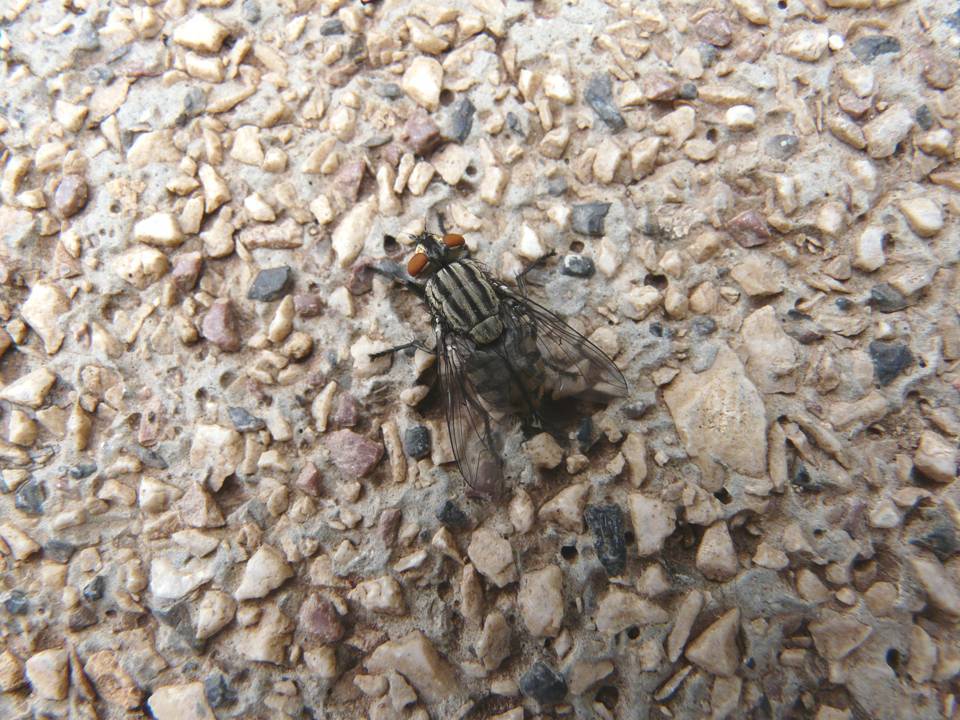

We are very grateful to Dr Sergio Ibañez-Bernal for the identification of the images
Designed by Paul Smith 2006. This website is copyrighted by law.
Material contained herewith may not be used without the prior written permission of FAUNA Paraguay.
Photographs on this page were taken by Paul Smith are used with permission.
 | FIGURE 1 |
|
FIGURE 1 - Unidentified sp. - Encarnación, Departamento Itapúa (Paul Smith August 2007).
SARCOPHAGIDAE - FLESH FLIES
Flesh flies are known for their habit of infesting meat, including in open wounds. As a result they are important vectors of disease, including leprosy. Typically identification to species level is possible only with males, and even then following dissection of the genitalia.
Characteristics
These are medium-sized flies usually recognisable by the grey thorax with thin black longitudinal stripes and checkered abdomen. Three-segmented antennae with arista, often plumose on the basal half though bare in some species. Four notopleural bristles are present, alternating between short and long in length from front to rear. The hindmost posthumeral bristle is located level with or towards the midline from the presutural bristle.Vein Rs with two branches. Frontal suture present and calypters well-developed.
Life Cycles
Flesh flies are viviparous, giving birth on meat or in open wounds. Some larvae are even internal parasites of mammals. Different species prefer to breed on corpses in different stages of decomposition, making the presence or absence of the larvae of certain species useful as a forensic tool. Larvae consume the surface on which they live, though they will also eat larvae of other invertebrates if presented with them. The larval stage typically lasts 5 to 10 days, with pupation taking place underground and adults living about a week.
Click on the images to enlarge them.

